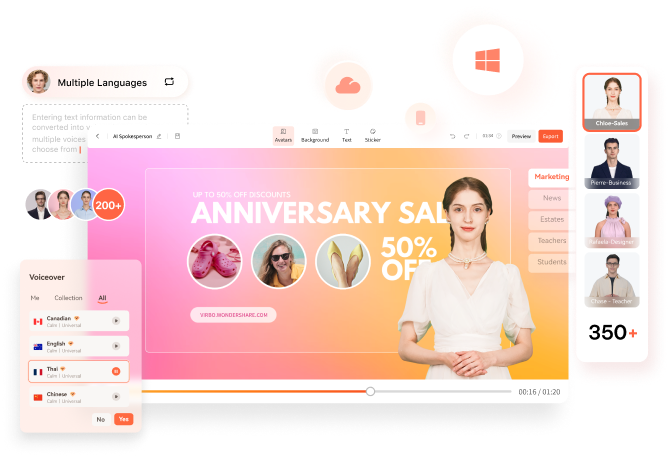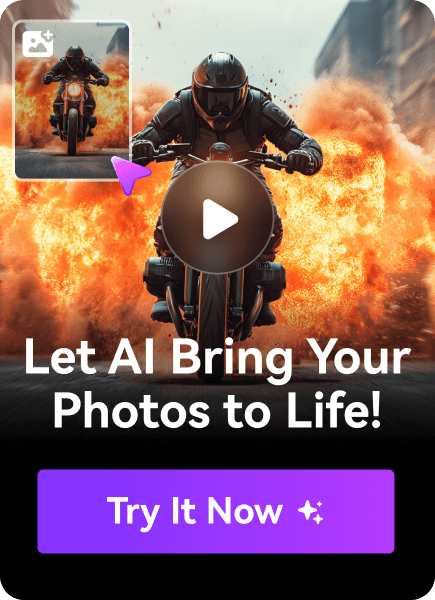With over 2 billion users worldwide, Instagram is a goldmine for marketers and businesses. New marketers are attracted to the platform for higher engagement, loads of leads, and massive conversions.
However, they often confuse Instagram cost metrics with Facebook, as both are handled by the same ad manager. However, it is far from the truth. The different user base, demographics, and engagement metrics make Instagram's cost policy vary from other platforms.
Planning to launch an Instagram ad campaign and wondering how much Instagram ads cost? Don’t worry! This guide takes you through the Instagram ad cost breakdown, along with best practices that can help you minimize your spending on the platform.
In this article
Part 1: How Much Do Instagram Ads Cost?

An advertiser can expect to pay between $0.01 and $500 per month, depending on the campaign type, ad formats, bidding strategy, competition, etc. However, that’s not it!
The Instagram ads cost is calculated using various metrics, including per click, per engagement, and per thousand impressions. Let’s discuss an average range for these metrics to get a realistic idea of how much businesses’ spend on the platform per month.
Cost Per Click
An average Instagram ad costs around $0.40 to $0.70, including all clicks (likes, comments, and shares). And, if you want your advert to reach a URL, Instagram increases the cost to $0.50-$0.95.
Around 12% of marketers spend an average of $2 per click, though it mostly depends on the bidding amount, competition, and relevancy of your ad. For instance, competitive industries like apparel and fashion ads can cost up to $3 per click.
Cost Per Engagement
In comparison, for cost per engagement, Instagram ad costs around $0.01 to $0.05 per engagement. Around 54% of marketers spend between $0.03-$0.08 per engagement, while 19% of them even spend more than $0.11 per engagement.
Cost Per Thousand Impression
When it comes to CPC or cost per thousand impressions, Instagram costs marketers between $2.5 to $3.0, especially for better-performing ad campaigns. This number can also go up to $6.0 per 1000 impressions. Even so, a small portion of advertisers spend around $10.
Instagram Vs. Facebook Ads Cost
Though both Instagram and Facebook come under the Meta ad manager, their prices differ. In comparison with Instagram, marketers pay around $0.97 per click and $7.19 per thousand impressions on Facebook.
Facebook, despite having a better reach and wider audience, seems less expensive for marketers. Still, most advertisers prefer Instagram, as it brings a younger audience, aged 25-29, and higher engagement than other social media sites.

Part 2: How is the Cost of Instagram Ads Calculated?
Given the competition, Instagram, like its parent company Facebook, follows a few parameters while deciding the ads cost. Let’s discuss them in detail.
1. Bidding Amount
First, Instagram determines how much an advertiser is willing to pay on ad campaigns for leads. Usually, the platform sets its bidding at higher rates, making marketers pay more for impressions and clicks. For instance, if your campaign budget is $1000 and the bidding amount is $2 CPC, you will get around 500 clicks.
2. Ads Relevance Score
The second Instagram ad cost parameter is the relevance score. Simply put, this score tells Instagram how relatable your ad is for the viewers who are seeing it. Let’s say, if your targeted ad reaches the right audience’s feed and they engage positively with it, it will increase your relevance score.
3. Competition
Considering the engagement it brings, Instagram hosts immense competition. When marketers narrow down their audiences’ demographics, they find others fighting for reach and engagement. It eventually leads to bidding wars and a higher ad cost.
4. Action Rates
Action rates refer to the likelihood of your audience interacting with your ad. Instagram evaluates this rate using actions like conversions and clicks. Action rates significantly influence your ad’s cost. If your ads have a higher action rate, Instagram will prioritize your ad and reduce its bidding amount, resulting in more ads and conversions in the same budget.
5. Additional Factors
Here are a few other factors that influence the cost of Instagram ads.
- Holidays: Competition during special events like Christmas increases significantly. This is because businesses are aiming to drive leads during these occasions.
- Gender: Typically, female-oriented ads cost more than male-oriented ones, as the women's audience on Instagram is higher. Thus, with higher engagement and interaction, advertisers are expected to pay a higher bidding amount.
- Target Market: Moreover, the market you try to reach also impacts the cost of your ad. For instance, B2C companies have significantly lower ad costs than B2B businesses, given the audience volume.
- Day of the Week: Instagram engagement is higher during weekdays. Hence it is better that you focus on running ads during working days like Tuesdays than Sundays.
Part 3: What Type of Ads Can I Launch on Instagram?
Before you launch an Instagram marketing campaign, it is important to understand the different ad formats and how their placement influences your budget. So, let’s get in.
1. Image Ads

Source: K6Agency
Image ads are one of the most effective, yet less expensive than video Instagram ads. Photo ads appear in the user feed, with a sponsored label and a strong CTA (call-to-action). Remember! Everything relies on your image, so make it engaging and interactive, following the platform’s theme and feed’s aspect ratio.
2. Video Ads

Source: K6Agency
Video ads, like image ads, come in the user’s feed. A video Insta ad can go up to a minute, long enough to attract your viewer’s attention. With a video ad, advertisers need to be strategic about the message to include visuals and sounds.
The only downside to video ads is that marketers invest more time and resources. On average, video ads are 17% more expensive than photo ads. Thus, to streamline the entire process of creating moving visuals, smart tools like Virbo might help. Its montage maker uses advanced algorithms to convert your clips into interactive ads. This way, building awareness, grabbing attention, and getting conversions seems effective and pocket-friendly.
3. Carousel Ads

Source: K6Agency
Carousels are your image and video ads but at a higher volume. Better than still images, these ads work best for showcasing a collection of products or informing the audience about your brands. E-commerce brands can make the most out of their ad campaigns with carousel ads.
4. Story Ads

Source: K6Agency
Story ads are the best placement for marketers to boost engagement. Millions of Instagram users check their stories every few minutes, a golden opportunity to connect with your target audience. So, make a 15-second story with a clear CTA and tell them about your brand.
5. Collection Ads

Source: K6Agency
Collection ads are yet another type of ads beneficial for eCommerce and SaaS. These ads let advertisers showcase multiple products and services, like carousel ads. Collection ads have a Shop Now symbol, taking you to the website. Though powerful for brand awareness, you have to pay more for these ads in terms of clicks.
Part 4: How to Create High-Converting Instagram Ads?
Now that you know the fundamentals of ad formats on Instagram, let’s see how to craft one that converts.
- Stick to Guidelines: First, follow Instagram guidelines and don’t waste time writing lengthy and unnecessary narrative descriptions. Follow the character limit of each ad format for ad copy and the aspect ratio for videos.
- Craft a Compelling CTA: Your ad copy should focus on prompting an action. Therefore, choose the right words. A few good CTA on Insta ads includes “learn more, see menu, listen more, order now, sign up, etc”.
- Focus on Video Creation: There is a misconception that your video creation should be expensive. Though expensive video equipment shows, it is not a necessity for advertisers on a tight budget. In such a case, employ smart tools like Virbo. It generates scripts, makes montages, does voiceovers, and applies trendy effects on your videos, using a fraction of your budget.
- Use Your Brand Voice: With more than 200 million business accounts, it is natural for users to forget yours. Here, your ads are a great way to increase awareness, so create one that stands out.
- Get Creative with AI: As mentioned above, AI tools like Virbo and Canva can help you stand out in the competition. You can employ it to transform your product pages into visually stunning videos, with trendy music and AI voiceovers. Moreover, tools like Jasper AI can help you craft a compelling copy, saving resources, time, and money.
Key Instagram Ad Performance Metrics
Now that you know what types of ads work for your objectives and how to create one, it is time to analyze the key Instagram performance metrics or KPIs. These KPIs give you valuable insights into the cost-effectiveness and success of your campaign. So, let’s discuss them.
1. Click Through Rate
CTR or Click Through Rate is the frequency of users’ clicks on your ads. Instagram calculates it by dividing the total clicks by total impressions. With CTR, you can measure how effective your ad is to capture the audience's attention.
2. Cost Per Click
CPC is yet another KPI that measures the cost efficiency of your ad campaign. It tells you how much you are spending for each ad click, offering better cost control. Comparing CPC across your ads campaigns helps you pinpoint what types of ads work for you and excel for your audience.
3. Engagement Rate
Engagement rate gives you insights into the quality of your Instagram ad content. You can get it by dividing the total likes, comments, and shares by the total followers. A higher engagement rate means your ads resonate with the viewers.
However, the engagement rate alone is not it! You also need to have engagement reach data by dividing the total engagement rate by the number of viewers (irrespective of whether they follow you).
4. Conversion Rate
If your business objective for Instagram ad campaigns is conversion, conversion rate is a crucial metric of success. Be it for purchase, lead, or any other desired action, a higher conversion rate means your ads are delivering. Businesses often use tools like Facebook Pixel and Google Analytics to track their ad conversions.
5. Cost Per Acquisition CPA
CPA is an extension of CPC. It emphasizes the overall cost of a business to acquire a new customer or conversion through their ad. CPA can be calculated by dividing the total spending on ads and the number of conversions. A higher CPA means your ads have gaps like ineffective landing pages, misaligned targeting strategies, etc.
6. Traffic to Your Website
If your ad's goal is driving traffic to the website, just tracking clicks won’t do the job. It is equally important to know how users are behaving once they are on the website. You can use Google Analytics or other smart tools to monitor things like bounce rates, sessions, etc. By understanding audience behavior, marketers are better equipped to amend strategies for high performance.
7. Reach and Impressions
Next, reach and impression are yet another two important key metrics for Instagram ad campaign success. Simply put, reach refers to the number of viewers that have encountered your ad, while impressions in the number of times the ad was displayed.
However, these two factors alone don't guarantee anything. You can get higher impressions without meaningful conversions. Hence, your KPIs should be considered as a whole, and not in exclusion.

Part 5: How to Lower Your Instagram Ads Cost?
Marketers on Instagram are always trying to lower the ad cost, considering the already high bidding amount. If you are new and have no clue, adopt these best practices.
1. Set Goals
Before you launch a campaign, get your team together and define your objectives. What do you want to achieve with advertisements on Instagram? Typically, marketers use this platform with three common goals.
- Awareness: Brands trying to increase the awareness of their values, products, services, and company. To draw people’s attention to your ads, try running a CPM campaign.
- Conversions: Some businesses are trying to push their products for sale through Instagram ads. If your campaign motivation is conversion, focus on building a compelling copy that encourages the target audience to invest in your products.
- Consideration: For consideration, businesses intend to educate their audience. So, pick and choose informative content for selective Instagram users that will also encourage them to convert. In this goal, your main agenda is generating views, clicks, and leads.
By narrowing down goals, marketers can come up with a cohesive strategy, focusing on ad copy that ensures higher engagement. In the long run, you will also know where to allocate resources.
2. Automatic Bidding
Meta delivery system offers automatic bidding for ad campaigns. It counts all the historical data and smart algorithms to place your ads correctly. It optimizes your adverts for maximum engagement and higher conversions, saving you from overbidding and making disadvantageous decisions.
3. Targeting Audiences
Precision targeting is yet another smart way to minimize Instagram ads cost. It lets you target specific individuals, relevant to your products and services’ users. Here are some parameters for audience targeting on Instagram.
- Demographics: Targeting leads using demographics like age group, gender, marital status, etc.
- Location: Narrowing down audiences from different geographic locations using postal codes.
- Habits: Targeting audience based on their actions and behaviors on your website.
- Interests: Selecting people on their interests, for example, tech, design, etc.
Using these metrics, advertisers are better able to reach a wider yet relevant audience, resulting in more leaders and conversions. It will also eventually help you reduce the bidding amount.
4. Relevant Landing Pages
A common mistake from many advertisers is directing their audience to the homepage from the Instagram ad. When audiences do not reach the ad-relevant site, it disinterests them and leads to lack of engagement. Hence, your strategy should consider a strong web design that takes viewers to the product page or catalog, where they are most likely to convert.
5. Testing Ads
If your budget allows, definitely consider ad testing to make sure you release the best version. For this task, you can contact professional marketing consultants to craft a relevant ad copy. It will help you get a higher ad position and lower bidding amount.
Conclusion
Instagram advertising continues to grow, with increasing opportunities for businesses to attract an audience, build a brand, and achieve desired conversions. Despite intense competition, it’s not yet saturated, which means you get a chance to place ads and may drive more engagement on your campaigns.
However, before proceeding, it’s wise to consider factors that count in launching an ad campaign on Instagram, cost being the most important. See what sort of ad formats best suit you, desired goals, competition, bidding amount, etc. Once done, it gives you a clear direction toward a cohesive strategy.
FAQs
-
How do Instagram ads work?
Instagram ads are paid content marketers launch on user’s Instagram feeds and stories. These paid promotions offer advertisers a wider audience to build brand awareness, increase engagement, drive traffic, and get conversions.
-
Why do you need to run Instagram ads?
With over 1.3 billion monthly users Instagram is the second most powerful advertising platform after its parent company, Facebook. Plus, it offers advanced targeting, allowing you to tailor content for ads for the audiences’ demographics interests, and locations. Moreover, the longer video format and higher engagement give you a golden opportunity to grab your audience's interest and translate it into leads.
-
What determines Instagram advertising costs?
The Instagram adverts' costs are not straightforward and account for several factors, including target audience, ad placement, and ad relevance score. Moreover, the intense competition and engagement on the platform also influence the ad's bidding amount. It is better to consider these parameters before launching a campaign.
-
Facebook vs. Instagram advertising costs?
Facebook and Instagram ad campaigns are launched using the Meta delivery system and the same ad manager. Still, you will see a noticeable difference between the ads cost on these platforms. Generally, Instagram ads have a higher cost, as it offers higher engagement and a young user base.





